U.S. military’s innovative Advanced Battle Management System takes leap forward
THE WATCH STAFF
A “sci-fi awesome” display of U.S. technical ingenuity and military power and precision has turbocharged development of next-generation warfighting capabilities that promise to redefine homeland defense for the hypersonic age.
More than 130 teams from government, industry and every branch of the U.S. Armed Forces gathered in dozens of locations in August and September 2020 to further field test the Advanced Battle Management System (ABMS), which the U.S. Air Force calls the “backbone of a network-centric approach” to 21st century warfare.
During the weeklong exercise, or onramp, military operators tapped into nascent technology such as artificial intelligence (AI), machine learning and virtual reality to identify and repel simulated attacks against the United States, including its space-based operations. In the “culminating punch,” a U.S. Army M109 Paladin 155 mm howitzer shot down a surrogate cruise missile with a hypervelocity projectile, according to Dr. Will Roper, assistant secretary of the Air Force for acquisition, technology and logistics.
“Tanks shooting down cruise missiles, that’s just awesome,” Roper told reporters. “That’s video game, sci-fi awesome.
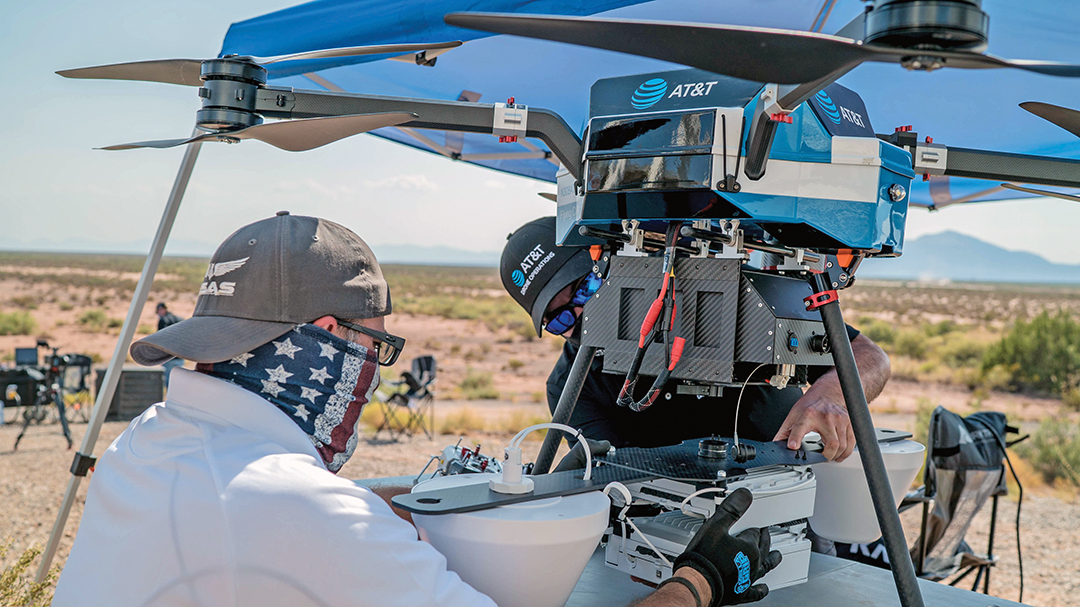
“And hypervelocity gun weapons systems are precisely the very mobile, scalable, high-density defense, with a low cost per kill, that can help us here in the homeland or could help defend a base and a forward-operating location far from home against a similar threat,” he said.
The second ABMS onramp, which followed an initial three-day exercise at Eglin Air Force Base in Florida in December 2019, involved about 1,500 participants at military bases, test ranges and other sites stretching from Maryland to New Mexico and Nevada to the Gulf of Mexico.
In the battlespace of tomorrow, combatants will be saturated with information, Roper said. The onramp tested the ability of personnel and systems to almost instantaneously synthesize and operationalize a tidal wave of data from myriad sources.
“We were able to fuse those into a common operational picture that warfighters understood, that provided information that was actionable at machine speeds that in the past would have taken 20 or 30 minutes to aggregate that we were able to do in a matter of seconds,” he said.
“You’re not supposed to be able to shoot down a cruise missile with a tank,” Roper added. “But, yes, you can if your bullet is smart enough, and the bullet that we used for that system is exceptionally smart.”
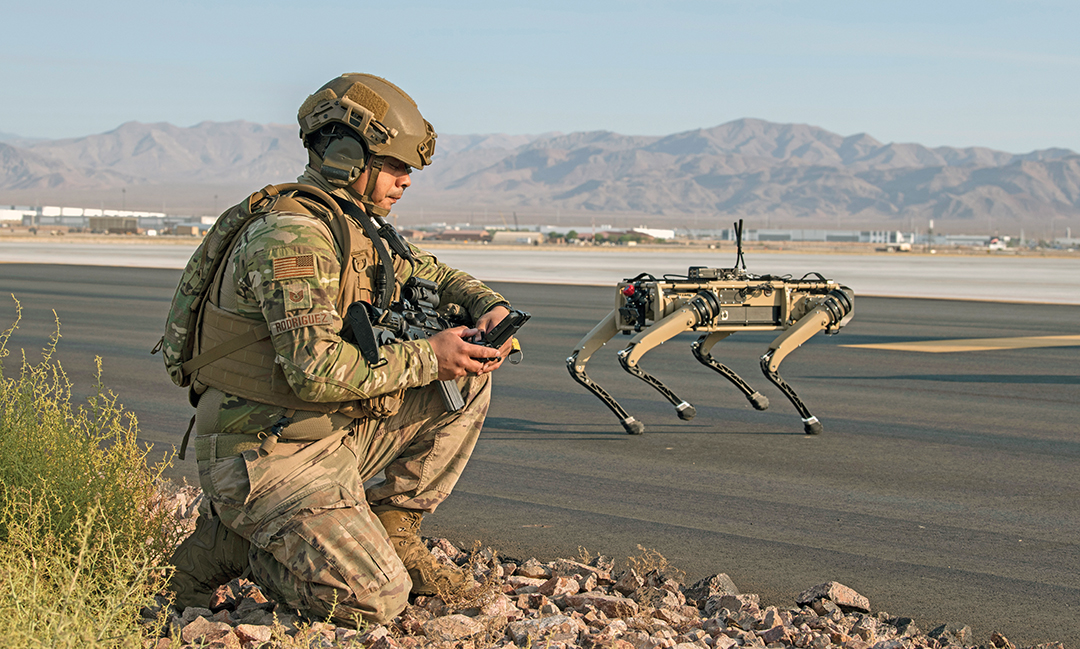
For Air Force Gen. Glen D. VanHerck, the exercise highlighted two crucial aspects of the revolutionary system: The ABMS augments but does not replace human decision-making; and in machine learning, the machine itself is learning in real time.
“What we saw as it took a look at the threat over and over, it digested more of what that threat capability looked like and gave us a higher percentage of confidence,” VanHerck, commander of U.S. Northern Command and the North American Aerospace Defense Command, told reporters. “And so, as a combatant commander, that is very appealing to me to get a system like that — that will learn and provide additional capability.”
‘A LEAGUE OF ITS OWN’
The need for speed is accelerating the modernization of battlefield capabilities and missile defense systems, as the pace of development and deployment of hypervelocity weapons quickens.
“In today’s era of great power competition, as new technologies alter the character of warfare, we must stay ahead of our near-peer rivals — namely China and Russia,” then-U.S. Secretary of Defense Mark Esper said in a speech at the U.S. Department of Defense (DOD) Artificial Intelligence Symposium and Exposition in September 2020, days after the ABMS onramp.
In December 2019, Russia announced the deployment of its first hypersonic nuclear-capable missile, which it claims can travel at 27 times the speed of sound, or about 33,000 kilometers per hour, The Associated Press reported.
That came just two months after China’s People’s Liberation Army debuted a hypersonic glide vehicle during a military parade, according to the DOD’s September 2020 report to the U.S. Congress titled “Military and Security Developments Involving the People’s Republic of China 2020.”
In the face of such rapidly developing threats, Esper said, “artificial intelligence is in a league of its own, with the potential to transform nearly every aspect of the battlefield, from the back office to the front lines.”
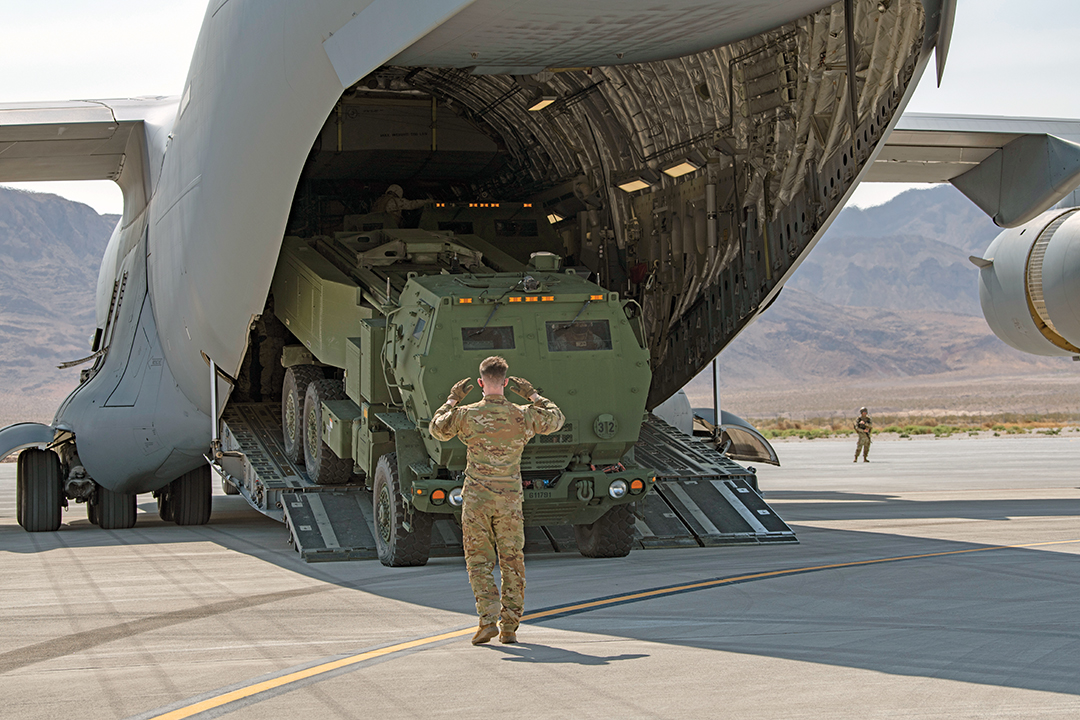
Development of the ABMS nests within a comprehensive reimagining of U.S. warfighting operations fueled by what Esper called the “tectonic impact” of game changers such as machine learning and AI. In 2018, the Pentagon established the Joint Artificial Intelligence Center as a centerpiece of its road map to adopt and scale AI. Among other projects, the center is exploring how AI-enabled predictive analytics can amplify human-machine collaboration to elevate decision-making.
“Our initial focus is creating decision-support tools for front-line commanders that will be critical in an evolving operational environment where speed, precision and agility are paramount for success,” Dana Deasy, the DOD’s chief information officer, said at the September 2020 symposium.
With historic levels of funding committed in this domain, Esper noted, the U.S. will “outpace our strategic competitors and maintain our military overmatch.”
“History informs us that those who are first to harness once-in-a-generation technologies often have a decisive advantage on the battlefield for years to come,” he told symposium attendees.
‘THE KEY TO NEXT-GEN WARFARE’
The U.S. Air Force has budgeted U.S. $3.3 billion over five years for ABMS development, which it identifies as its No. 1 modernization priority.
“To win the contested, high-end fight, we need to accelerate how we field critical technologies today,” Air Force Chief of Staff Gen. Charles Q. Brown Jr. said in a September 2020 statement. “Rapid, iterative experimenting ultimately places relevant capability in warfighters’ hands faster.
“We cannot afford to slow our momentum on ABMS,” Brown added. “Our warfighters and combatant commands must fight at internet speeds to win.”
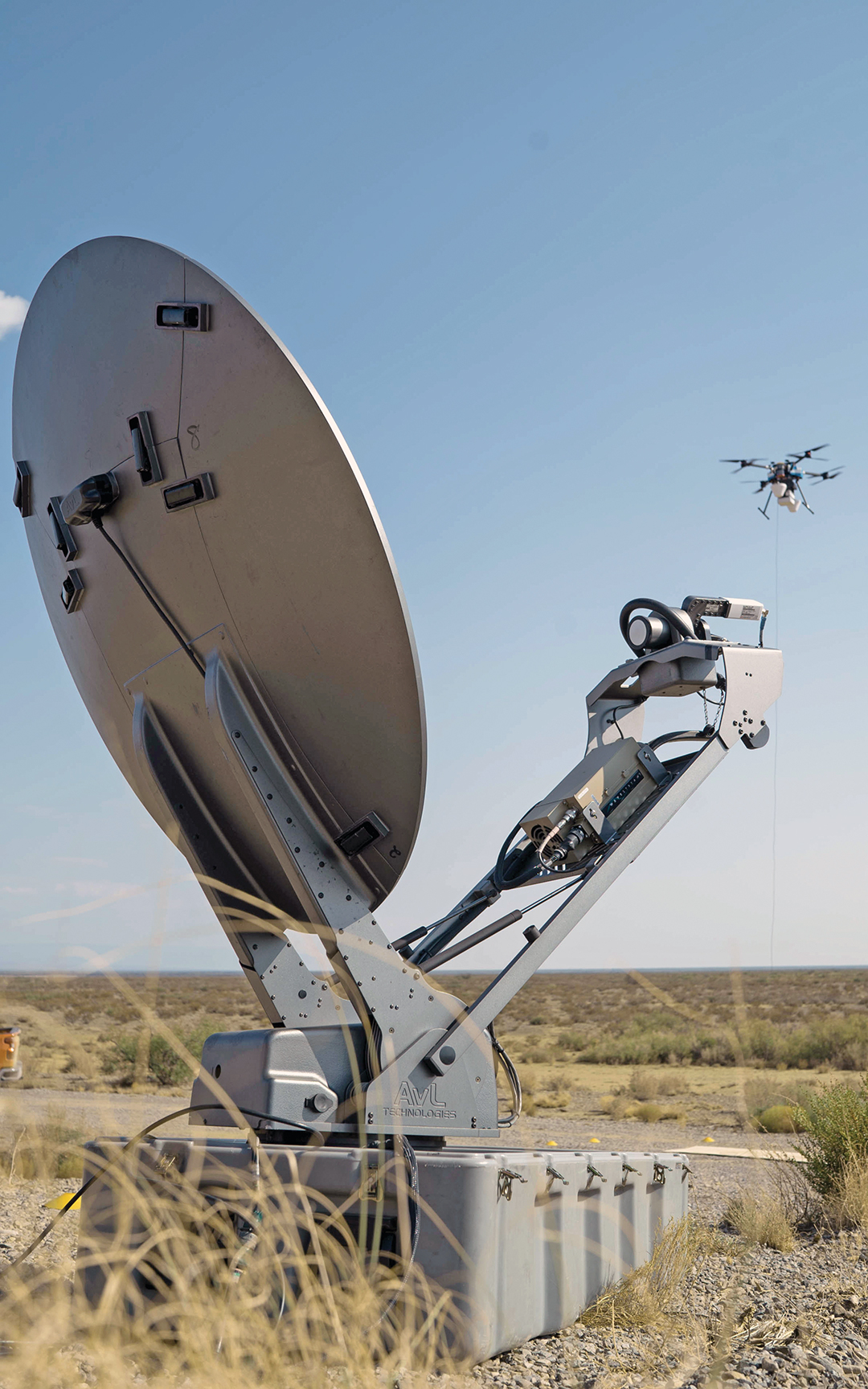
STAFF SGT. CHARLYE ALONSO/U.S. AIR FORCE
When fully functional, the system will serve as the cornerstone of the DOD’s Joint All-Domain Command and Control (JADC2) initiative encompassing all military branches and domains — air, land, sea, space and cyberspace.
ABMS teams from the U.S. government, military and defense industry are developing algorithms and software that glean and analyze data gathered by aircraft, satellites, ships and ground-based sensors, among other sources. Real-time data dissemination speeds and streamlines multidomain decision-making, eliminating information silos among disparate command-and-control systems.
During the second ABMS onramp, teams confronted a range of scenarios, including scrambling fighter jets to defend against a simulated cruise missile-capable air threat and intercepting and destroying a target drone masquerading as a cruise missile. Operators used digital technology such as virtual reality and augmented reality, while the use of tablet computers put command-and-control functions in commanders’ hands.
Data pulled from sources including missile-warning radar, acoustic sensors and prototype sensor towers that combine radar and electro-optical infrared cameras was delivered to the cloud through 4G and 5G communication systems. That enabled “a kill chain that took seconds, not minutes or hours to complete,” Roper said.
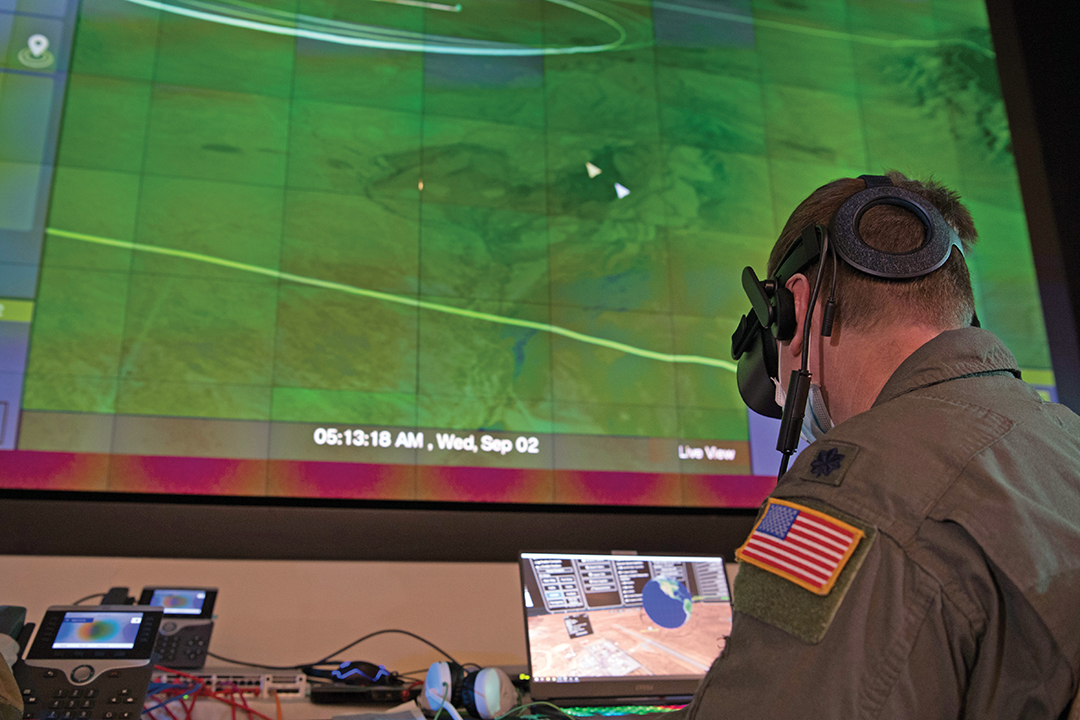
“Potential adversaries are investing heavily in these fields, and we must exploit new approaches to sustain the advantage,” U.S. Chief of Space Operations Gen. John “Jay” Raymond said in a news release. “We are exploring how to use JADC2 and ABMS to link sensors to shooters across all battlespaces, at speed and under threat. Maturing these concepts and capabilities is necessary to fight and win in the information age.”
Roper said the exercise cemented military leaders’ growing trust in AI and analytics. “Valuing data as an essential warfighting resource, one no less vital than jet fuel or satellites, is the key to next-gen warfare,” he said.
Future ABMS onramps likely will be scheduled on a four-month cadence and eventually will incorporate U.S. allies and partners, according to the Air Force. Capabilities will be rolled out for operational use as they prove their mettle during testing.
VanHerck said that any skepticism he had about the potential of AI and machine learning was blown away by the potency on display at the second onramp.
“For me, as a warfighter, this is about all-domain operations and all-domain command and control,” he said. “I don’t care where the information comes from or how it gets there, I just need the information to be decision-quality. For domain awareness, it gives me information dominance for decision superiority.”

